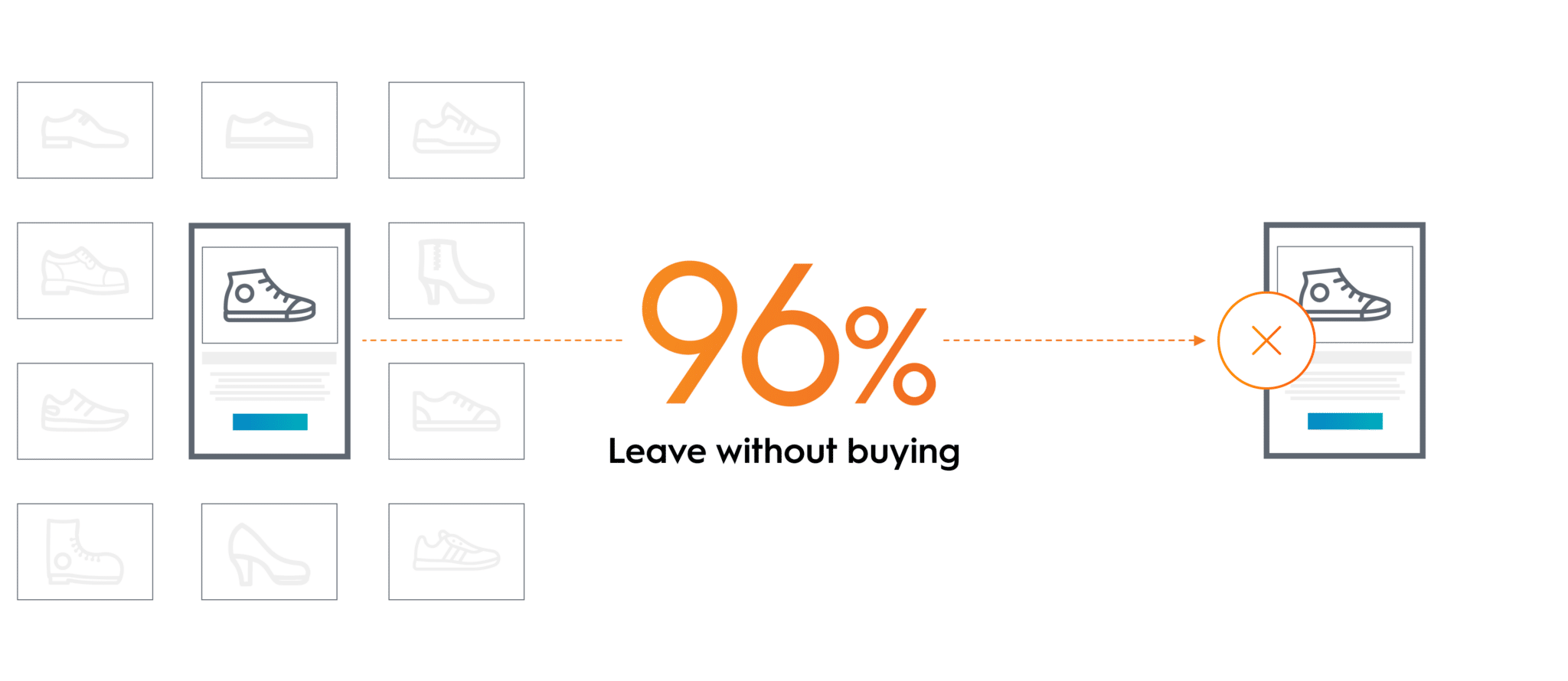The latest numbers show that only 4% of site visitors end up making a purchase. This leaves marketers with a very pressing problem: How do you convert the 96% who left without buying? Retargeting. Retargeting is a strategic way to remind shoppers of their initial interest and bring them back to complete their purchase. Let’s take a closer look.
A shopper, let’s call her Kim, browses products on your website from her laptop. She views several items, but leaves without putting anything in the cart. A few days later, Kim is on her mobile device and sees an ad for a product she viewed, plus some other related items she hadn’t seen before. She’s reminded of your brand, intrigued by the ad, and returns to make a purchase. This is retargeting in action.

Basic retargeting engages the customer throughout the purchasing journey by showing ads for the product they most recently viewed. Advanced retargeting programs take it several steps further by:
Static retargeting involves creating a set group of ads to be served depending on which pages of your site someone visited.
Say you developed a marketing campaign around an eBook. You create four ads that direct people to the eBook. Each one is triggered when a visitor browses a specific product page or article on your site. One ad may target people who looked at the product, while another may appeal to those who read articles about a topic similar to that of your eBook.
Static retargeting is best for B2B companies. It’s also a good strategy for when you want to target a certain type of audience, but not a specific individual, or when you only want to promote one specific product or offer.
Dynamic retargeting creates custom ads for each shopper. It requires more sophisticated technology, including machine learning, to analyze shopper behaviors, tailor the ad based on individual preferences, and determine when to serve the ad to maximize the likelihood of conversion.
If you’re in the B2C commerce business, and have a large product catalog, and a large customer base, dynamic retargeting is for you. The variables involved in a successful retargeting ad are simply too great to do manually, and the ROI of delivering personalized ads is too great to pass up. In fact, 88% of U.S. marketers reported seeing measurable improvements due to personalization — with more than half reporting a lift greater than 10%. (Evergage)

Besides addressing the 96% problem, retargeting is an effective strategy for several reasons.
It’s cost-effective, with a proven ROI. Retargeting is highly profitable, especially when run according to best practices. Personalized ads, served at the right time, deliver maximum engagement. And with CPC-based pricing (offered by some retargeting providers), you only pay when someone clicks, so your budget goes further.
The actual cost of a retargeting campaign depends on the cost of each ad placement and, of course, on the budget you allocate. The value you get depends on the pricing model being offered and your specific goals.
Typcially, retargeting campaigns are offered on a CPM or CPC cost basis:
CPM is best when your goal is awareness, as you pay for impressions, but aren’t guaranteed any clicks. Many times, you pay for an impression that’s at the bottom of the page and isn’t even seen. Not an ideal model for driving sales.
CPC means that you only pay when someone clicks. And someone who clicks is likely very interested in the offer. When you have a specific performance goal, like increasing revenue, CPC is the model of choice.
Retargeting and remarketing are sometimes used interchangeably, but in most marketing circles, they are not the same thing. Retargeting and remarketing are both strategies to convert a site visitor who hasn’t yet bought anything. It’s the method of outreach that’s different.
Criteo’s ad platform works for businesses of all sizes.
Go beyond walled gardens and access unique audiences based on our deep understanding of 2.5+ billion monthly active shoppers.
Get access to the world’s largest open commerce data set built from over $900B in annual Ecommerce sales.
Deliver hyper-relevant ads that are powered in real-time by our AI Engine, which analyzes over 120 shopping intent signals from 35B daily browsing and buying events.
